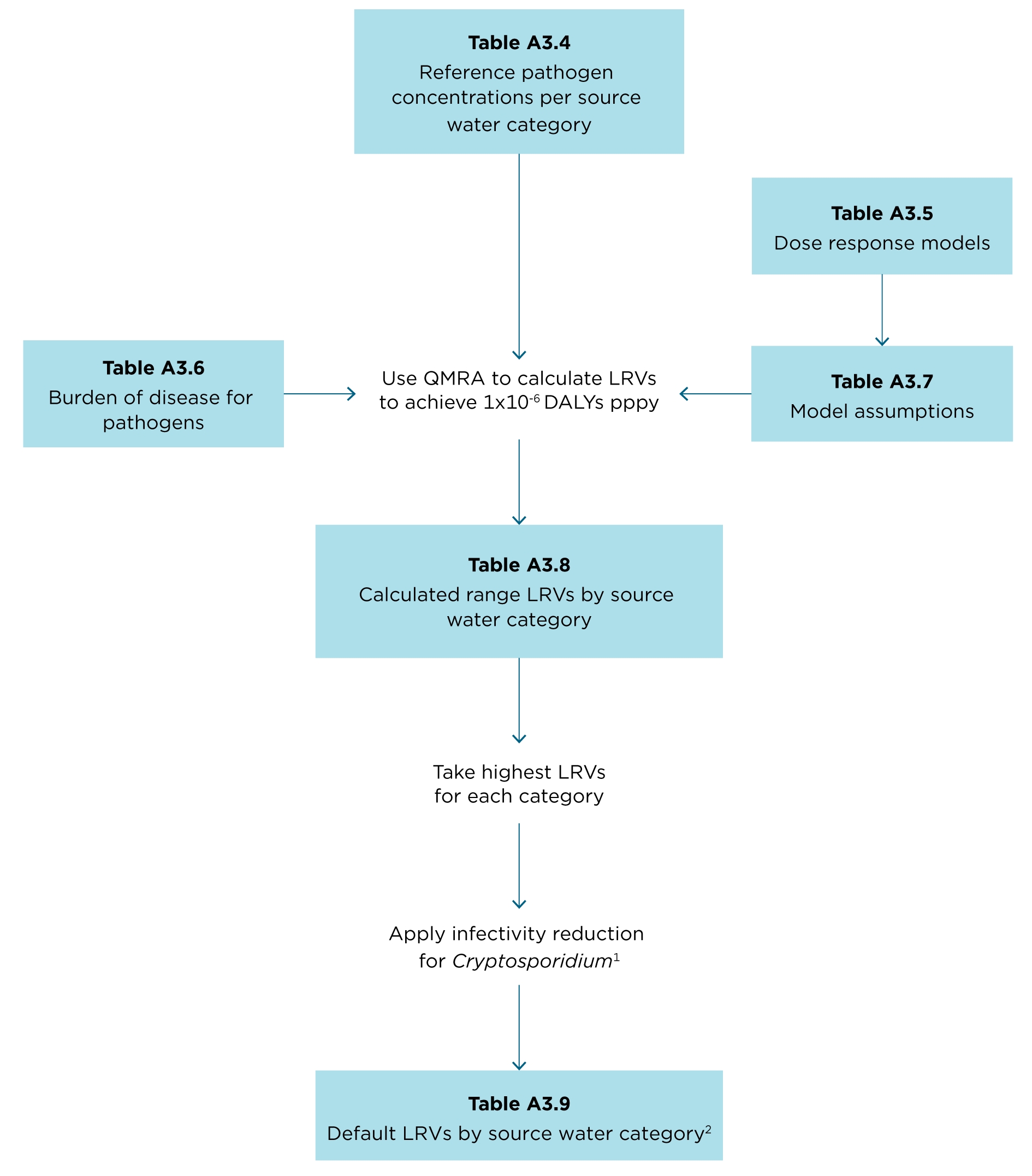A3.2 Adopting the QMRA approach in the Guidelines
Epidemiological approaches that rely on published, peer reviewed, critically-appraised data are the preferred standard of evidence upon which to base NHMRC guidelines and related public health decisions. However, the limitations or lack of epidemiological data can prevent the timely and accurate risk assessment of raw water sources and the appropriate treatment needed for safe drinking water. The retrospective nature of epidemiological methods, combined with their limited sensitivity and issues with accurately measuring low levels of pathogens in drinking water, can drive the need for supplementary evidence to assist in decision-making.
Since the USEPA adopted QMRA in 1996 it has been clear that this alternative approach can help fill the data gap and be used to derive treatment targets for drinking water (Cunliffe 2009; WSAA 2015; USEPA 2006; WHO 2016). The World Health Organization (WHO) has recommended the application of a QMRA framework for deriving treatment requirements tailored to the needs of an individual water supply (WHO 2017).
NHMRC consultation with stakeholders in 2014 identified that the WHO approach was preferred for the Guidelines. This is consistent with the approach used for the Australian Guidelines for Water Recycling (NRMMC, EPHC and AHMC 2006; NRMMC, EPHC and NHMRC 2008). This appendix applies the WHO QMRA framework to published Australian data.
In this appendix, the QMRA framework is applied to determine the treatment target as reduction values (LRV) required to meet a health outcome target (Section A3.3). The health outcome data is described (Appendix A3.4), the scientific data upon which the input assumptions are based are summarised (Sections A3.5 to A3.8), and the calculation of the LRVs are demonstrated (Section A3.9).
Figure A3.1 shows how the QMRA framework is applied to determine the LRVs in Table A3.9. Specific details of any step can be understood by following the explanations given in the corresponding sections of this appendix.
Undertaking a site-specific assessment for determining LRVs or varying the model inputs and/or assumptions should be done in accordance with the WHO guidance document (WHO 2016) on conducting QMRAs. It should only be done in consultation with the relevant health authority or drinking water regulator. There may be instances for site-specific calculations where application of the approach described in Figure A3.1 requires a departure from the QMRA assumptions applied in this appendix. One example is the discount applied to Cryptosporidium infectivity, where in instances of higher risk source waters a 0.5 reduction may be more appropriate. The process in Figure A3.1 is not intended to show all possible departures and is merely a summary to show how LRVs from Table A3.9 are derived.
Figure A3.1 Derivation of LRVs from first principles

¹ -1.0 for Categories 2 to 4
² LRVS rounded to nearest 0.5